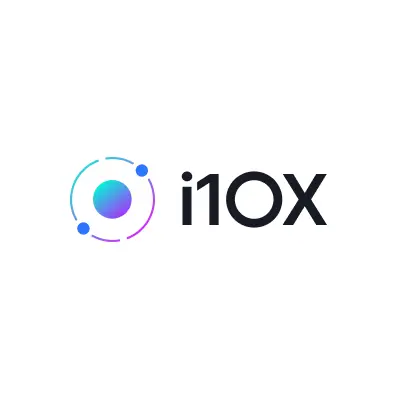AI Customer Feedback Tool

What is gleap.io?
Gleap.io is a comprehensive customer feedback platform that enables businesses to enhance their products and strengthen customer relationships. It features an array of tools including visual bug reporting for efficient troubleshooting, live chat for real-time user support, and an AI-powered assistant named Kai that provides 24/7 responses using GPT-4 technology. Additionally, Gleap.io offers a product roadmap for managing feature requests, a SEO-optimized knowledge base to address common issues, and in-context surveys for collecting actionable insights. Trusted by over 3,450 organizations worldwide, Gleap.io offers a 14-day free trial and a discounted program for eligible startups. Further details on features and pricing can be accessed on the official website.
Can I integrate Gleap.io with my existing systems?
Gleap.io supports seamless integration with a broad spectrum of existing systems, enhancing workflow automation across various business functions. It is compatible with a variety of project management tools, customer support platforms, and developer environments. Key integrations include:
- Project Management Tools: Jira, Trello, Asana, and Notion
- Developer Tools: GitHub, Azure DevOps, and Webhooks
- Communication Platforms: Slack, Microsoft Teams, and Discord
- Customer Support Platforms: Zendesk and HubSpot
- CRM Systems: Salesforce
These integrations enable users to efficiently route feedback items, bug reports, and other pertinent data directly to their chosen tools, thereby boosting productivity and streamlining processes. Integration setup is user-friendly and can be managed via the Integrations section on the Gleap.io dashboard. Users have the flexibility to configure multiple integrations to route different types of tickets to appropriate tools, optimizing data handling and response strategies.
How much does gleap.io cost?
Gleap.io provides a range of pricing plans tailored to meet the diverse needs of businesses of different sizes. Here is a breakdown of their current pricing options:
- Hobby Plan: Priced at $19 per seat per month, this plan is aimed at small businesses and startups looking for basic functionality.
- Pro Plan: Available at $49 per seat per month, this plan includes advanced AI capabilities suitable for handling larger volumes of support.
- Enterprise Plan: At $119 per seat per month, this plan is designed for enterprise customers requiring enhanced security features.
In addition to the base plans, Gleap.io also charges for certain extras:
- AI Tokens: Cost approximately $0.03 per 1,000 tokens used.
- Outreach Messages: Charged at $0.001 for each additional message sent.
- Emails: Additional emails are charged at $0.002 each.
For startups, Gleap.io offers a discount where eligible companies can receive advanced features at half the price for their first year. To ensure access to the most current and precise pricing details, it is recommended to visit the official Gleap.io pricing page.
What are the benefits of gleap.io?
Gleap.io provides a comprehensive set of features designed to optimize product development and enhance customer service. Key benefits of using Gleap.io include:
Accelerated Bug Resolution: Gleap.io significantly speeds up the bug fixing process by automatically logging detailed bug reports that include annotated screenshots, environment data, logs, and replay videos. This capability can increase bug resolution efficiency by up to ten times.
Enhanced Customer Feedback: The platform includes feature request software and a shareable public roadmap, enabling businesses to accurately gauge and respond to user demands.
Continuous Updates: Businesses can keep their users updated with the latest changes through release notes and news articles integrated directly into the Gleap widget.
Improved Support: The contextual help center and knowledge base are designed to autonomously handle up to 30% of incoming support queries, streamlining customer support operations.
Increased User Engagement: In-app surveys facilitated by Gleap.io collect actionable insights from users, helping businesses refine their offerings and enhance user engagement.
AI-Powered Customer Service: With Kai, an AI bot powered by GPT-4, Gleap.io offers a human-like customer service experience around the clock, transforming how support is delivered.
Automation Capabilities: The platform promotes better activation, retention, and conversion rates through targeted in-app chats and automated email messaging.
Customizable Chatbots: Users can create custom chatbots without any need for coding, making it easier to scale customer service as business grows.
These features collectively aim to boost sales, enhance customer relationships, and maximize satisfaction, all while helping to manage support volume effectively. Gleap.io integrates various functionalities like bug reporting, live chat, product roadmaps, and more into a single, user-friendly platform, ensuring a seamless experience for both businesses and their customers.
What are the limitations of gleap.io?
While Gleap.io provides a robust suite of features for bug reporting and customer feedback management, there are certain limitations that users should consider:
Network Request Limit: Gleap restricts the size of network requests it can capture. Any network request content exceeding 150KB is truncated and marked as
<content_too_big>. This could limit the visibility into larger data exchanges that occur during application use.Replay Length: The platform imposes length restrictions on replays. For application replays, the maximum duration is one minute, while for web applications and websites, it can track up to 15,000 DOM changes. This may restrict the detail available in longer sessions.
AI Bot Customization: Kai, the AI-powered bot, allows for some level of customization with company-specific information. However, its ability to handle more complex or nuanced customer service scenarios is limited. This might affect its effectiveness in more specialized or technical contexts.
Automation Complexity: While Gleap.io offers significant capabilities for automation and messaging, these might not fully meet the complex needs of larger enterprises or specific industries requiring detailed and extensive automated workflows.
These constraints are typically in place to maintain the platform's performance and user experience. To determine how these limitations might affect your business operations, it’s advisable to review Gleap.io's official documentation and consult their support team for a more tailored understanding.
What Are the Key Features of Gleap That Enhance Customer Support?
Gleap is designed to boost customer support by integrating multiple tools that simplify and improve the support experience. The platform features in-app bug reporting, which automatically logs comprehensive data for quick troubleshooting. It also offers live chat for real-time customer interactions and the AI bot, Kai, which uses GPT technology to provide human-like service around the clock. These features help businesses resolve issues faster, improve customer satisfaction, and reduce support volume effectively.
How Does Gleap Improve Product Development Through Customer Feedback?
Gleap enhances product development by leveraging customer feedback through various mechanisms. It facilitates collecting user insights with in-context surveys and empowers users to vote on feature requests through a public product roadmap. This process allows companies to prioritize developments based on user needs and preferences. Additionally, Gleap's knowledge base ensures that customer issues are proactively resolved, further supporting iterative product improvements driven by actual user input.
What Is the Pricing Structure of Gleap and Are There Any Special Offers Available?
Gleap's pricing is structured to cater to businesses of different sizes. It includes the Hobby Plan at $19 per seat per month, the Pro Plan at $49 per seat per month, and the Enterprise Plan at $119 per seat per month, each offering varying levels of features and AI capabilities. There are additional costs for AI tokens, outreach messages, and extra emails. Startups may benefit from a special offer that provides advanced features at half the price for the first year. For the latest pricing details, potential users should refer to the official Gleap website.






.svg)

.svg)












.webp)


.webp)


















